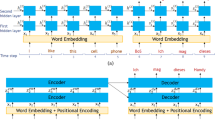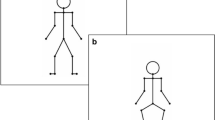Abstract
The combination of frequency-tagging with electroencephalography (EEG) has recently proved fruitful for understanding the perception of beat and meter in musical rhythm, a common behavior shared by humans of all cultures. EEG frequency-tagging allows the objective measurement of input–output transforms to investigate beat perception, its modulation by exogenous and endogenous factors, development, and neural basis. Recent doubt has been raised about the validity of comparing frequency-domain representations of auditory rhythmic stimuli and corresponding EEG responses, assuming that it implies a one-to-one mapping between the envelope of the rhythmic input and the neural output, and that it neglects the sensitivity of frequency-domain representations to acoustic features making up the rhythms. Here we argue that these elements actually reinforce the strengths of the approach. The obvious fact that acoustic features influence the frequency spectrum of the sound envelope precisely justifies taking into consideration the sounds used to generate a beat percept for interpreting neural responses to auditory rhythms. Most importantly, the many-to-one relationship between rhythmic input and perceived beat actually validates an approach that objectively measures the input–output transforms underlying the perceptual categorization of rhythmic inputs. Hence, provided that a number of potential pitfalls and fallacies are avoided, EEG frequency-tagging to study input–output relationships appears valuable for understanding rhythm perception.
Similar content being viewed by others
References
Adrian ED, Matthews BHC (1934) The interpretation of potential waves in the cortex. J Physiol 81:440–471. https://doi.org/10.1113/jphysiol.1934.sp003147
Alonso-Prieto E, Belle GV, Liu-Shuang J, Norcia AM, Rossion B (2013) The 6 Hz fundamental stimulation frequency rate for individual face discrimination in the right occipito-temporal cortex. Neuropsychologia 51(13):2863–2875
Bruner JS (1957) Going beyond the information given. Norton, New York
Celma-Miralles A, de Menezes RF, Toro JM (2017) Look at the beat, feel the meter: top-down effects of meter induction on auditory and visual modalities. Front Hum Neurosci 10:108. https://doi.org/10.3389/fnhum.2016.00108
Chemin B, Mouraux A, Nozaradan S (2014) Body movement selectively shapes the neural representation of musical rhythm. Psychol Sci 25(12):2147–2159
Cirelli LK, Spinelli C, Nozaradan S, Trainor LJ (2016) Measuring neural entrainment to beat and meter in infants: effects of music background. Front Neurosci 10:229. https://doi.org/10.3389/fnins.2016.00229
Desain P, Honing H (2003) The formation of rhythmic categories and metric priming. Perception 32(3):341–365
Ding et al (2016) Temporal modulations in speech and music. Neurosci Biobehav Rev. https://doi.org/10.1016/j.neubiorev.2017.02.011
Edelman GM (1978) The mindful brain: cortical organization and the group-selective theory of higher brain function. MIT Press, Cambridge (ISBN 9780262050203)
Edelman GM, Gally JA (2001) Degeneracy and complexity in biological systems. Proc Natl Acad Sci USA 98(24):13763–13768
Eggermont JJ (2001) Between sound and perception: reviewing the search for a neural code. Hear Res 157(1–2):1–42
Galambos R (1982) Tactile and auditory stimuli repeated at high rates (30–50 per sec) produce similar event related potentials. Ann NY Acad Sci 388:722–728
Galambos R, Makeig S, Talmachoff PJ (1981) A 40-Hz auditory potential recorded from the human scalp. Proc Natl Acad Sci USA 78:2643–2647
Helmholtz H (1866) Concerning the perceptions in general. Translated by Southall JPC Treatise on physiological optics, vol III, 3rd edn., Dover, New York (1925 Opt Soc Am Sect. 26)
Henry MJ, Herrmann B, Grahn JA (2017) What can we learn about beat perception by comparing brain signals and stimulus envelopes? PLoS ONE 12(2):e0172454. https://doi.org/10.1371/journal.pone.0172454
Joris PX, Schreiner CE, Rees A (2004) Neural processing of amplitude-modulated sounds. Physiol Rev 84(2):541–577
Lerdahl F, Jackendoff Ray (1983) A generative theory of tonal music. MIT Press, Cambridge
London J (2004) Hearing in time: psychological aspects of musical meter. Oxford, London
McAuley JD (2010) Tempo and rhythm. In Jones MR et al (eds) Music perception, Springer handbook of auditory research 36, Springer, New York
Moungou A, Thonnard JL, Mouraux A (2016) EEG frequency tagging to explore the cortical activity related to the tactile exploration of natural textures. Sci Rep 6:20738. https://doi.org/10.1038/srep20738
Norcia AM, Appelbaum LG, Ales JM, Cottereau BR, Rossion B (2015) The steady-state visual evoked potential in vision research: a review. J Vis 15(6):4
Nozaradan S (2014) Exploring how musical rhythm entrains brain activity with electroencephalogram frequency-tagging. Phil Trans B 369(1658):20130393. https://doi.org/10.1098/rstb.2013.0393
Nozaradan S, Peretz I, Missal M, Mouraux A (2011) Tagging the neuronal entrainment to beat and meter. J Neurosci 31:10234–10240
Nozaradan S, Peretz I, Mouraux A (2012b) Selective neuronal entrainment to the beat and meter embedded in a musical rhythm. J Neurosci 32(49):17572–17581
Nozaradan S, Zerouali Y, Peretz I, Mouraux A (2015) Capturing with EEG the neural entrainment and coupling underlying sensorimotor synchronization to the beat. Cereb Cortex 25(3):736–747
Nozaradan S, Schönwiesner M, Caron-Desrochers L, Lehmann A (2016a) Enhanced brainstem and cortical encoding of sound during synchronized movement. Neuroimage 142:231–240
Nozaradan S, Mouraux A, Jonas J, Colnat-Coulbois S, Rossion B, Maillard L (2016b) Intracerebral evidence of rhythm transform in the human auditory cortex. Brain Struct Funct 222(5):2389–2404
Nozaradan S, Peretz I, Keller PE (2016c) Individual differences in rhythmic cortical entrainment correlate with predictive behavior in sensorimotor synchronization. Sci Rep 6:20612. https://doi.org/10.1038/srep20612
Nozaradan S, Mouraux A, Cousineau M (2017a) Frequency-tagging to track the neural processing of contrast in fast continuous sound sequences. J Neurophysiol. https://doi.org/10.1152/jn.00971.2016
Nozaradan S, Schwartze M, Obermeier C, Kotz SA (2017b) Specific contributions of basal ganglia and cerebellum to the neural tracking of rhythm. Cortex, (In press)
Pantev C, Roberts LE, Elbert T, Ross B, Wienbruch C (1996) Tonotopic organization of the sources of human auditory steady-state responses. Hear Res 101(1–2):62–74
Picton TW, John MS, Dimitrijevic A, Purcell D (2003) Human auditory steady-state responses. Int J Audiol 42(4):177–219
Plack CJ, Barker D, Hall DA (2014) Pitch coding and pitch processing in the human brain. Hear Res 307:53–64
Povel DJ, Essens PJ (1985) Perception of temporal patterns. Music Percept 2:411–441
Rajendran VG, Garcia-Lazaro JA, Harper NS, Lesica NA, Schnupp JWH (2016) Asymmetry in neural responses to “on-beat” and “off-beat” sounds in the gerbil inferior colliculus. Proceedings of APAN XIV meeting San Diego, CA, USA, 2016
Regan DM (1966) Some characteristics of average steady-state and transient responses evoked by modulated light. Electroencephalogr Clin Neurophysiol 20(3):238–248
Regan DM (1989) Human brain electrophysiology: evoked potentials and evoked magnetic fields in science and medicine. Elsevier, New York
Repp BH (2005) Sensorimotor synchronization: a review of the tapping literature. Psychon Bull Rev 12(6):969–992
Retter TL, Rossion B (2016) Uncovering the neural magnitude and spatio-temporal dynamics of natural image categorization in a fast visual stream. Neuropsychologia 91:9–28
Ross B, Draganova R, Picton TW, Pantev C (2003) Frequency specificity of 40-Hz auditory steady-state responses. Hear Res 186(1–2):57–68
Rossion B (2014) Understanding individual face discrimination by means of fast periodic visual stimulation. Exp Brain Res 232(6):1599–1621
Rossion B, Boremanse A (2011) Robust sensitivity to facial identity in the right human occipito-temporal cortex as revealed by steady-state visual-evoked potentials. J Vis 11(2):16. https://doi.org/10.1167/11.2.16
Stupacher J, Wood G, Witte M (2017) Neural entrainment to polyrhythms: a comparison of musicians and non-musicians. Front Neurosci 11:208. https://doi.org/10.3389/fnins.2017.00208
Tal I, Large EW, Rabinovitch E, Wei Y, Schroeder CE, Poeppel D, Zion Golumbic E (2017) Neural entrainment to the beat: the “missing-pulse” phenomenon. J Neurosci 37(26):6331–6341
Town SM, Bizley JK (2013) Neural and behavioral investigations into timbre perception. Front Syst Neurosci 7:88. https://doi.org/10.3389/fnsys.2013.00088
van Noorden L, Moelants D (1999) Resonance in the perception of musical pulse. J New Music Res 28:43–66
Wang X, Lu T, Bendor D, Bartlett E (2008) Neural coding of temporal information in auditory thalamus and cortex. Neuroscience 157(2):484–494
Zhou H, Melloni L, Poeppel D, Ding N (2016) Interpretations of frequency domain analyses of neural entrainment: periodicity, fundamental frequency, and harmonics. Front Hum Neurosci 10:274. https://doi.org/10.3389/fnhum.2016.00274
Acknowledgements
S.N. is supported by an Australian Research Council (ARC) DECRA DE160101064 and FRSM 3.4558.12 Convention Grant from the Belgian National Fund for Scientific Research (F.R.S.-FNRS) (to Pr. A. Mouraux). P.K. is supported by a Future Fellowship grant from the Australian Research Council (FT140101162).
Author information
Authors and Affiliations
Corresponding author
Ethics declarations
Conflict of interest
The authors declare that they have no conflict of interests.
Rights and permissions
About this article
Cite this article
Nozaradan, S., Keller, P.E., Rossion, B. et al. EEG Frequency-Tagging and Input–Output Comparison in Rhythm Perception. Brain Topogr 31, 153–160 (2018). https://doi.org/10.1007/s10548-017-0605-8
Received:
Accepted:
Published:
Issue Date:
DOI: https://doi.org/10.1007/s10548-017-0605-8






